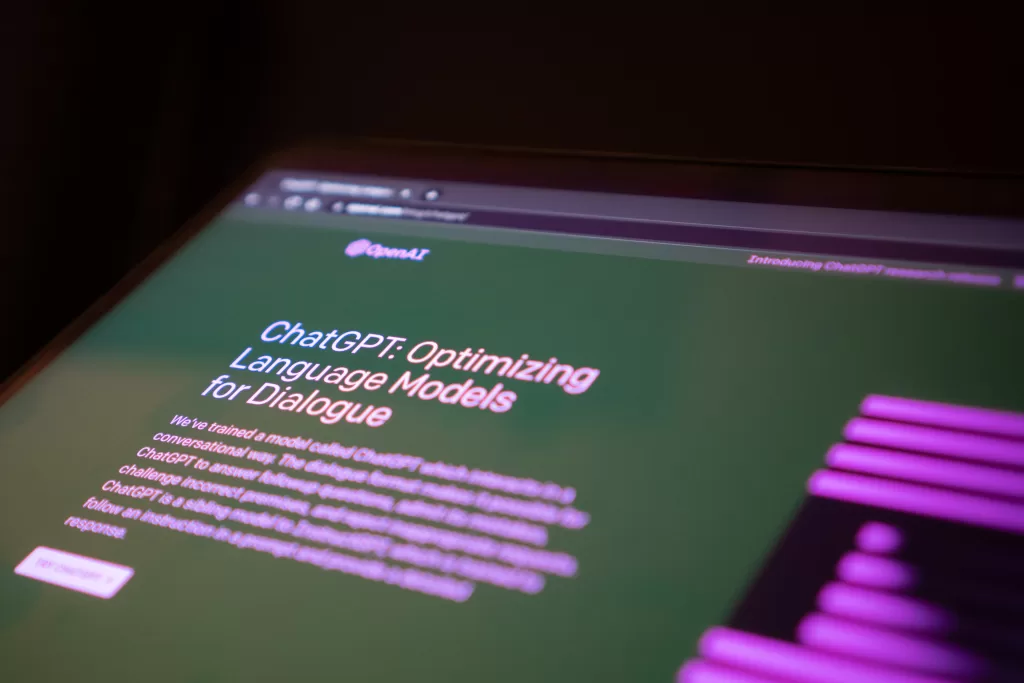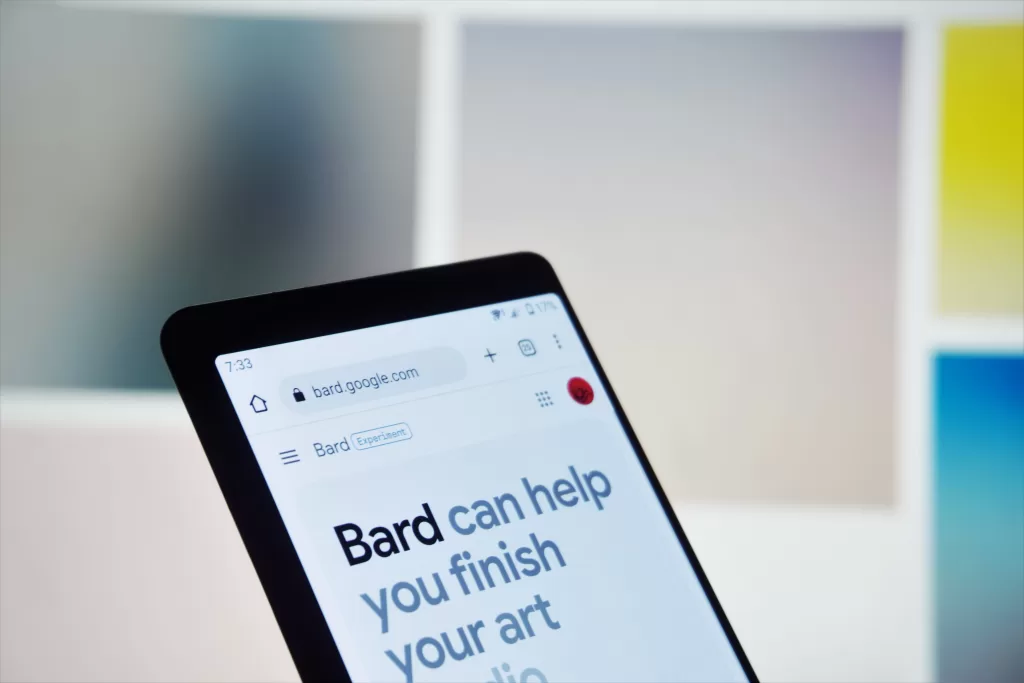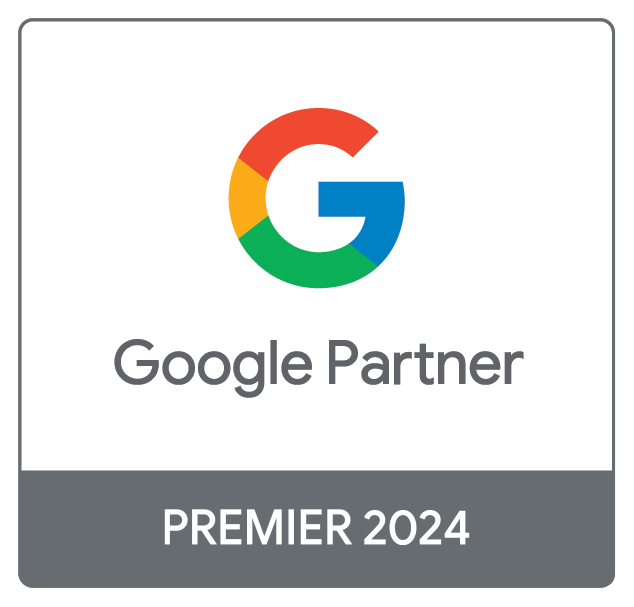Artificial Intelligence (AI) has woven itself into the fabric of our digital world, enhancing our lives in ways we couldn’t have imagined a few decades ago. Among the myriad applications of AI, conversational agents have emerged as powerful tools, transforming the way we interact with machines. In this blog post, we’ll embark on a journey through the realm of conversational AI, focusing on two notable players: ChatGPT and Google Bard.
Before we delve into the specifics of ChatGPT and Google Bard, let’s take a moment to understand the landscape of conversational AI. These systems are designed to understand and generate human-like text, facilitating seamless interactions between humans and machines. They are trained on vast datasets to comprehend context, generate coherent responses, and mimic natural language patterns.
ChatGPT

ChatGPT, launched by OpenAI in November 2022, is an AI chatbot utilising large language models (LLMs) and natural language processing (NLP) based on the GPT architecture. It employs deep learning and transformer models to process user input and generate real-time responses. ChatGPT draws on extensive internet data training, offering a substantial knowledge base. Beyond text responses, it can perform tasks like text translation, solving programming problems, and reasoning. OpenAI’s future plans involve continuous enhancement, adapting to customer needs, improving performance, expanding platform compatibility, and potentially introducing features like Android support.
Google Bard

Google Bard, launched in February 2023, initially used the LaMDA language model and later transitioned to PaLM 2. Similar to ChatGPT, Bard utilises NLP and transformers for conversational interactions but stands out with web search capabilities for up-to-date information. With training from diverse sources, Bard offers additional features such as translation, coding, and creative writing tasks. It aims to be a conversational AI, incorporating Google search when needed. Google plans to expand Bard’s capabilities by integrating with Google services and collaborating with Adobe Firefly for AI image generation in the chat.
Comparison
| ChatGPT | Google Bard | |
| Language Model | GPT-3 and GPT-4 AI language models | PaLM 2 language model |
| Model Training | Transformers and neural networks | Machine learning, neural networks, deep learning, and transformers |
| Cost | Free version with GPT-3.5, $20/month for GPT-4 with plug-in functionality | Free |
| Training Data | Publicly available data | Publicly available data, licensed data, human-trained data |
| Strengths | Understanding human input using NLP techniques | Focus on generating creative and relevant content with internet access by default |
ChatGPT excels in understanding human input through NLP, while Google Bard focuses on generating creative and relevant content with default internet access. The models differ in their architecture, training data, cost structures, and strengths.
Closer comparisons
Architecture and Technology
ChatGPT: OpenAI’s ChatGPT employs the Generative Pre-trained Transformer (GPT) architecture, specifically designed for various natural language tasks. Central to GPT is the transformer model, which assesses the significance of each word in a sentence and leverages transformers to predict the most likely text characters following the input.
Google Bard: Google Bard utilises the PaLM 2 technology, which, like GPT, incorporates the transformer architecture for data processing and predicting subsequent word sequences. Notably, Bard undergoes additional training layers to excel in tasks such as image generation, coding, and translation.
Natural Language Processing Capabilities
ChatGPT: With extensive training on internet text data, ChatGPT excels in natural language processing, demonstrating a profound understanding of language nuances. It effectively generates content while understanding instructions and maintaining context, though fact-checking is advised for technical topics.
Google Bard: In contrast, Google Bard doesn’t solely rely on NLP for processing user input. It searches through documents and websites for relevant information, producing contextually relevant and creative output.
Training and Learning
ChatGPT: Trained on a dataset gathered from vast internet text until September 2022, ChatGPT used unsupervised machine learning and fine-tuning techniques in its initial training. Subsequent training involves feedback from users and contractors.
Google Bard: Google Bard incorporates training data from various sources, including publicly available and licensed data. Its initial training involves unsupervised machine learning, followed by additional training using specific examples of programming and translation.
Integration and Applications
ChatGPT: Offers diverse capabilities, including text generation, programming assistance, translation, and creative writing. Users can integrate ChatGPT into various applications through API access, and paid users can install plug-ins for additional functionalities.
Google Bard: Comes with built-in internet access for free, providing up-to-date information. Recent enhancements, including translation capabilities, contribute to Bard’s versatility, but it currently lacks plug-ins or direct API access.
Accuracy and Reliability
Both ChatGPT and Google Bard may exhibit variations in accuracy. ChatGPT may have inaccuracies, sometimes referred to as “hallucinations.” Google Bard, leveraging web browsing, aims for better information retrieval, but it can still generate unreliable information using generative techniques.
Privacy and Data Handling
ChatGPT: OpenAI maintains a comprehensive privacy policy, storing only conversation history data, which is removed upon deletion. API data is retained for 30 days. Users are advised not to input sensitive information.
Google Bard: Adheres to Google’s overall privacy policies, and while data from Bard can be used for third-party information, personally identifiable information is excluded.
Cost
Both ChatGPT and Google Bard are free. ChatGPT offers a subscription model, ChatGPT Plus, at $20 per month, providing access to the more powerful GPT-4 version, web browsing, and plug-ins.
Which one is better?
Determining the superior chatbot is challenging, as both ChatGPT and Google Bard possess distinct strengths and weaknesses. ChatGPT excels in generating creative text formats and offering up-to-date information on specific topics. On the other hand, Google Bard outshines in producing human-like responses and delivering current information across a broader spectrum of subjects.
Ultimately, the choice between the two depends on individual requirements. If you prioritise a chatbot for creative text generation or niche topic updates, ChatGPT might be the preferable option. Conversely, if you seek a chatbot capable of human-like responses or comprehensive information retrieval on various topics, Google Bard may better suit your needs.
The following table summarises the key distinctions between ChatGPT and Google Bard:
| Feature | ChatGPT | Google Bard |
| Training dataset | Text and code from the internet up to 2021 | Text and code from the internet, including scientific papers, maths expressions, and source code |
| Access to the internet | No | Yes |
| Strengths | Generating creative text formats, providing up-to-date information on certain topics | Generating human-like responses, providing up-to-date information on a wider range of topics |
| Weaknesses | Limited knowledge of current events, cannot access the internet in real time | Still under development, not as proficient at generating creative text formats as ChatGPT |
Conclusion
As users navigate the decision between ChatGPT and Google Bard, the choice becomes intricately tied to the specific demands of their applications. ChatGPT’s strength in preserving context and its versatile nature make it an apt choice for tasks that require nuanced language understanding. It stands as a reliable companion in scenarios where real-time internet access is not the primary consideration. In contrast, Google Bard’s prowess in real-time information retrieval and its capacity to generate responses that emulate human-like conversational patterns make it particularly adept in dynamic scenarios where the latest information is critical.
Both ChatGPT and Google Bard contribute significantly to the expansive landscape of AI-driven conversational agents. The continual evolution of these technologies promises a future where conversational AI not only comprehends the intricacies of human communication but also seamlessly adapts to the dynamic and ever-changing information landscape. This evolution hints at unprecedented possibilities in human-machine interactions, promising a future where AI not only understands context but also proactively engages with users in meaningful and contextually relevant ways.
Ultimately, whether opting for ChatGPT or Google Bard, users find themselves armed with formidable tools at the forefront of conversational AI innovation. The nuanced differences in their capabilities empower users to make informed decisions, aligning the strengths of each model with the unique demands of their applications. The synergistic interplay between context-awareness, versatility, and real-time information access heralds a future where conversational AI serves as an intuitive and adaptive companion, ushering in an era of heightened interaction, engagement, and endless possibilities in the ever-evolving digital landscape.
What is your opinion? Which one do you prefer? Share your opinion with us in the comments below. We are looking forward to hearing from you soon!








